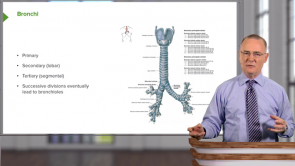Mammogram – Breast

About the Lecture
The lecture Mammogram – Breast by Craig Canby, PhD is from the course Abdominal Wall with Dr. Canby.
Included Quiz Questions
What is the most common location of breast cancer?
- Upper lateral quadrant
- Lower lateral quadrant
- Upper medial quadrant
- Lower medial quadrant
- Central region
What is the most common malignant cancer in women?
- Breast cancer
- Cervical cancer
- Lung cancer
- Melanoma
- Colon cancer
At which age will women have a clearer demonstration of malignant growth on a mammogram?
- 45 years
- 21 years
- 15 years
- 29 years
- 10 years
Customer reviews
5,0 of 5 stars
| 5 Stars |
|
5 |
| 4 Stars |
|
0 |
| 3 Stars |
|
0 |
| 2 Stars |
|
0 |
| 1 Star |
|
0 |


![Anatomy [Archive]](https://assets-cdn1.lecturio.de/lecture_collection/image_medium/87992_1693919964.png)

